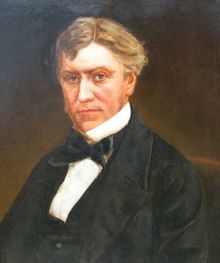Charles Fox (civil and railway engineer)
| Sir Charles Fox | |
|---|---|
 |
|
| Born |
11 March 1810 Derby, United Kingdom |
| Died | 11 June 1874 (aged 64) Blackheath, London |
| Spouse(s) | Mary Fox (née Brookhouse) |
| Children | Charles Heyland Fox Sir Francis Fox Sir Charles Douglas Fox |
| Parent(s) | Dr. Francis Fox |
| Engineering career | |
| Discipline | Civil engineer Structural engineer |
| Institutions | Institution of Civil Engineers, Institution of Mechanical Engineers, Fellow of the Royal Asiatic Society and Royal Geographical Society |
| Projects | The Crystal Palace |
Sir Charles Fox (11 March 1810 in Derby, United Kingdom – 11 June 1874) was an English civil engineer and contractor. His work focused on railways, railway stations and bridges.
Born in Derby in 1810, he was the youngest of five sons of Dr. Francis Fox. Initially trained to follow his father's career, he abandoned medical training at the age of 19 and became articled to John Ericsson of Liverpool, working with him and John Braithwaite on the Novelty locomotive, which he drove in the Rainhill trials on the Liverpool and Manchester Railway. He acquired a taste for locomotive driving and was employed on the Liverpool and Manchester Railway, being present at its opening.
In 1830 Fox married Mary, second daughter of Joseph Brookhouse, by whom he had 3 sons and a daughter – two of them becoming the engineers Francis Fox and Charles Douglas Fox.
One of his earliest inventions, patented in 1832, was railway points, which superseded the sliding rail used up to that time.
In 1837 Robert Stephenson appointed him as one of the engineers on the London and Birmingham Railway, where he was responsible for Watford tunnel and the incline down from Camden Town to Euston. He presented an important paper on the correct principles of skew arches to the Royal Institution. In 1837 the future philosopher of evolution Herbert Spencer, whose father George Spencer had been Fox's tutor when young, joined him as an assistant engineer.
...
Wikipedia
